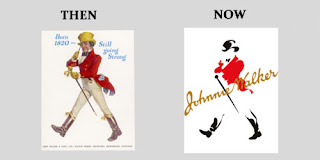The Piccadilly Lights have to be my all time favourite outdoor advertising site. As a teenager, the Claes Oldenburg picture above was one of my favourite art works, and possibly one influence that drew me into advertising as a career.
What I love about the Piccadilly Lights is the combination of tradition and innovation, and the way this advertising site reflects the changing social, cultural and technological landscape.
The first illuminated sign in the area appeared over a century ago - for Perrier, in 1908.
In the 1930s, neon technology took over, with signs for brands such as Bovril, Schweppes and the first appearance of the famous Guinness clock.
Coca Cola first appeared in 1954, and in the 1960s, brands such as BP, Skol, Players and Cinzano had their names in lights. Here's a picture from the early 70s.
By the 80s, tech brands had taken over largely from food and drink, although McDonald's first appeared in 1987. Here's a scene from 1985.
Not all these tech brands are still with us, and as their fortunes changed, so did technology itself. In the 1990s, the lights began to go digital, and in the new millennium, LED displays came to the fore.
The Piccadilly Lights will relaunch in late 2017 as 'the largest single digital screen in Europe' aka 'The Curve.' Participating brands will include Coca Cola, Samsung and four more. The digital LED screen will be able to do all sorts of nifty stuff - real time, co-creation, social media and all the rest.
Any guesses for how it'll all look in 2117?
GOING FORWARD – MORE PROOF
10 months ago

















































